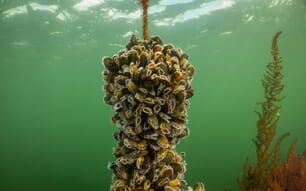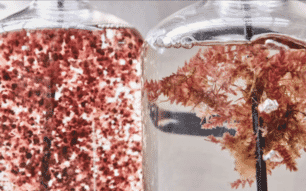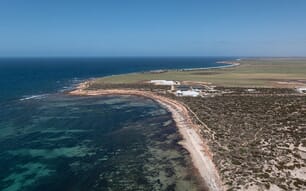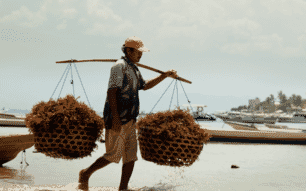“We have found,” said Sue Scott, ASF’s VP of Communications,” that the management of salmon farming in Maine holds the industry there to higher standards than is the case in Canada.”
Ironically, a major salmon producer, New Brunswick-based Cooke Aquaculture, operates in both countries, but is better regulated in Maine thanks to the clout of the US Endangered Species and Clean Water Acts. Now Maine has few salmon escapes from open nets in the ocean, and better control of sea lice and disease thanks to better codes of containment, stricter monitoring and third party audits.
In Canada, the industry is essentially self-regulated. Large-scale escapes are frequent occurrences in open-pen fish farming and can happen through routine handling, or large-scale events, such as storms. There is potential for farmed escapees to enter rivers, and breed with wild salmon, causing reduced genetic diversity and fitness in wild populations. In addition, wild salmon are then faced with a new competitor for freshwater resources, said the ASF.
The prevalence of disease and parasites increases with the high density of fish in pens that is common to salmon aquaculture. Diseases and parasites can spread to wild fish, subsequently threatening the persistence of wild populations. Ocean open-pen operations spread infections among densely-packed fish and magnify the intensity of diseases such as Infectious Salmon Anemia (ISA). ISA outbreaks in the salmon aquaculture industry have been a huge problem in Canada, first in New Brunswick, and then Nova Scotia and Newfoundland, when the industry expanded there. Since 1996, at least $135 million has been paid by governments to compensate industry for having to eradicate farmed salmon infected with ISA.
As few as eight sea lice can kill a wild Atlantic salmon smolt going to sea. The dense crowding in salmon farms encourages a population explosion of sea lice, which must be treated with chemicals. Sea lice become resistant to treatments, requiring the industry to use more toxic chemicals that get into the ocean, killing other sea creatures. The desperation of the aquaculture industry in Canada to control sea lice and the deadliness of the chemicals that they may use were obvious in an incident several years ago that resulted in charges being laid. In the spring of 2013, Cooke Aquaculture was found guilty of two charges by Environment Canada in connection with the deaths of hundreds of lobster in the Bay of Fundy for using an illegal pesticide to control sea lice.
As in Maine, the wild salmon that are in the vicinity of salmon aquaculture operations in Canada are either threatened or endangered. The Committee on the Status of Endangered Wildlife in Canada (COSEWIC) noted that the growth of the Canadian aquaculture industry has coincided with a severe decline in wild populations in the nearby rivers in the Bay of Fundy. COSEWIC also noted that in North America, farm-origin salmon have been reported in 87 per cent of the rivers investigated within 300 km of aquaculture sites.
The expert panel on sustaining marine diversity of the Royal Society of Canada, a National Academy that promotes scientific research and development, noted that the introduction or exacerbation of infectious diseases and parasites probably constitutes the greatest potential threat to biodiversity posed by salmon aquaculture.
“All this points to the importance of having Canada at least catch up with the US in managing salmon farming impacts,” said Ms Scott. “The ultimate goal would be a transition to closed-containment salmon aquaculture, which completely separates salmon farms from contact with wild fish and their environment.”
“The Gulf of Maine and Bay of Fundy are part of the same ecosystem, and there is no system of border control when escaped Canadian salmon cross into US territory and enter US wild salmon rivers,” concluded Ms Scott.




